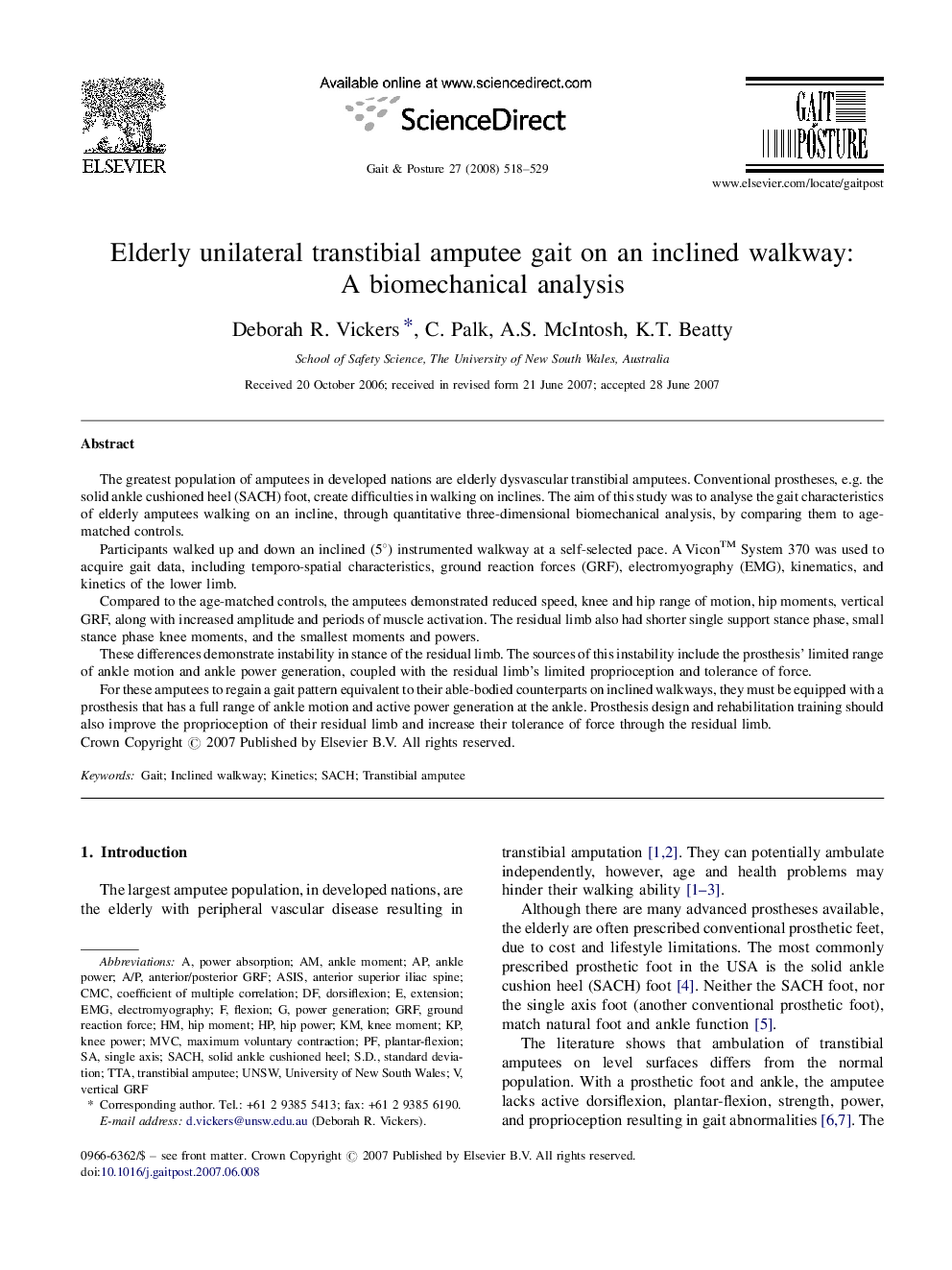| کد مقاله | کد نشریه | سال انتشار | مقاله انگلیسی | نسخه تمام متن |
|---|---|---|---|---|
| 4058203 | 1265710 | 2008 | 12 صفحه PDF | دانلود رایگان |

The greatest population of amputees in developed nations are elderly dysvascular transtibial amputees. Conventional prostheses, e.g. the solid ankle cushioned heel (SACH) foot, create difficulties in walking on inclines. The aim of this study was to analyse the gait characteristics of elderly amputees walking on an incline, through quantitative three-dimensional biomechanical analysis, by comparing them to age-matched controls.Participants walked up and down an inclined (5°) instrumented walkway at a self-selected pace. A Vicon™ System 370 was used to acquire gait data, including temporo-spatial characteristics, ground reaction forces (GRF), electromyography (EMG), kinematics, and kinetics of the lower limb.Compared to the age-matched controls, the amputees demonstrated reduced speed, knee and hip range of motion, hip moments, vertical GRF, along with increased amplitude and periods of muscle activation. The residual limb also had shorter single support stance phase, small stance phase knee moments, and the smallest moments and powers.These differences demonstrate instability in stance of the residual limb. The sources of this instability include the prosthesis’ limited range of ankle motion and ankle power generation, coupled with the residual limb's limited proprioception and tolerance of force.For these amputees to regain a gait pattern equivalent to their able-bodied counterparts on inclined walkways, they must be equipped with a prosthesis that has a full range of ankle motion and active power generation at the ankle. Prosthesis design and rehabilitation training should also improve the proprioception of their residual limb and increase their tolerance of force through the residual limb.
Journal: Gait & Posture - Volume 27, Issue 3, April 2008, Pages 518–529